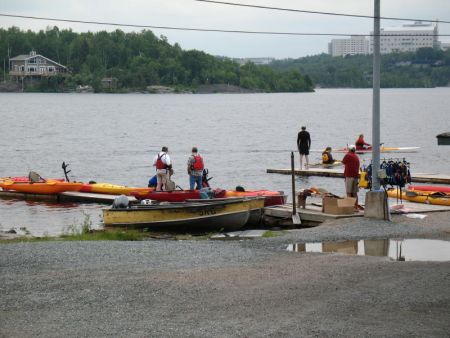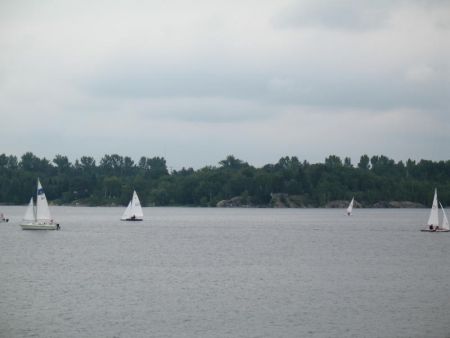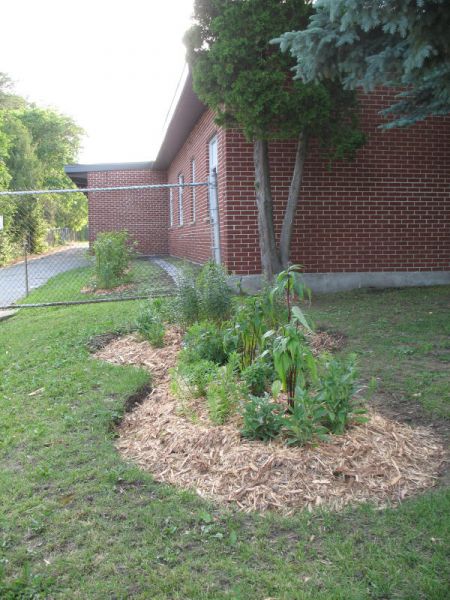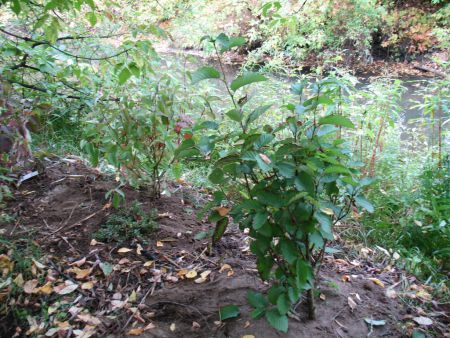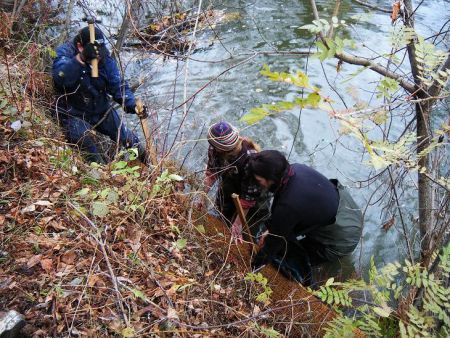It is summer. Boats are on the water, lake swims are being organized, and the Health Unit recently released a public announcement to warn residents to watch for blue-green algae. Water quality issues are top of mind for Greater Sudbury residents, and top of the list of concerns are the impacts of development and stormwater run-off.
"We're allowing far ... too many nutrients to enter our lakes. ... We're too careless in our building codes and our land practices. We're not brave enough to insist that drinking water be protected or lakes be protected. The consequence is that if we don't, we'll lose the use of our waters more and more frequently." So said Dr. John Gunn of the Living with Lakes Centre during the launch of the Vital Signs Report on Oct. 2, 2012. These statements resonate with public concern and local activism. Reducing the impact of development on watershed health is one of the top four priorities agreed to by local environmental groups at the Spring 2012 Green Gathering.
Greater Sudbury Watershed Alliance (GSWA) and Coalition for a Liveable Sudbury (CLS) have been advocating strongly for local watershed health for several years. The need for watershed studies to make informed development decisions protective of water quality has been an important focus. Strong public support was evident this spring when a Council motion to prioritize and complete watershed studies passed unanimously. GSWA and CLS (presenting a joint submission by fifteen local environmental groups) followed up at the June 18 budget session, requesting funding be in place to implement this decision.
The Official Plan Review has also been a focus for advocacy efforts by a number of groups . Key asks include requirements for watershed studies, increases in vegetative buffers along shorelines and wetlands, requirements for low impact development standards, and requirements for more stringent stormwater treatment standards. Recent scientific studies have brought home the point that local conditions, including historical industrial contamination, and climate change must be taken into account. Local experts such as Drs. John Gunn and David Pearson have spoken compellingly on this subject on a number of occasions over the past year. “Ramsey is on a knife edge. So the planning policies around the lake need to take into account climate change, and the vulnerability of the lake.” Dr. Pearson is quoted as saying in a February 2013 Northern Life article.
Other efforts aim to educate and empower citizens to make a difference in their own actions. An “Ask a Scientist” public event hosted by GSWA this spring educated local citizens about local water quality issues. Coalition for a Liveable Sudbury is leading a Rain Gardens and Rain Barrels Project with other community partners that focuses on on-site measures to reduce the amount of storm water run-off. So far, volunteers have distributed newsletters throughout the Ramsey Lake watershed, put in two small rain gardens at Adamsdale Public School, sold affordable rain barrels to residents, and offered a rain garden workshop at the Sudbury Gardening Festival.
Natural services provided by riparian and wetland areas are key to water quality. Within the Junction Creek watershed, the Junction Creek Stewardship Committee continues to implement important projects to restore natural functions, including enhancing wetlands, shoreline planting, clean-ups, and creek bank restoration. Many school groups, community groups, and volunteers take part. These opportunities to be directly involved in making a difference in nature foster connection and a sense of stewardship.
There are 28 lake steward groups in Greater Sudbury. Active in water quality issues specific to their lake or waterway, they have many issues and concerns in common. GSWA acts as an umbrella group to speak to these common concerns and facilitate communication among the many groups. As a network of water stewards, they have also proven to be effective in mobilising their member groups around common causes, and filling Council Chambers for key votes.
Urban water steward committees such as Ramsey Lake, Minnow Lake, St. Charles, and Robinson Lake Stewardship Committees are highly concerned about impacts of proposed residential and commercial developments that will add pressures from additional storm water run-off. Other water stewards face threats specific to their waterbody or watershed. The Vermilion River Stewardship are challenging five peaking hydroelectric proposals along the river, while also anticipating impacts from the proposed chromite smelter. A Trillium grant will allow them to carry out extensive water sampling over the next two years. After strong advocacy directed at the province, Long Lake Stewardship recently succeeded in obtaining testing and a promise of clean up of arsenic contamination from an old mine site at one end of the lake.
Ramsey Lake, the Vemilion River, and Wanapitei are also drinking water sources, and will be subject to drinking water source protection policies. The local Source Protection Committee has submitted draft policies, which are awaiting approval from the provincial Ministry of the Environment. Conservation Sudbury is the lead agency for this work. Many residents obtain their drinking water privately from other water bodies not included under source protection, and this is one of the key changes water stewards are advocating. Other concerns surrounding drinking water sources include intensive recreational use of Ramsey Lake, regular freight train traffic along the northern shore of Ramsey Lake, and existing and new development pressures.
To find out more about local environmental groups active on water issues, click here.
To see a summary of current work by these groups, click here.
To receive updates on water issues and other local environmental issues, contact clsudbury@live.com to request the Coalition for a Liveable Sudbury e-newsletter.
Naomi Grant chairs Coalition for a Liveable Sudbury.
